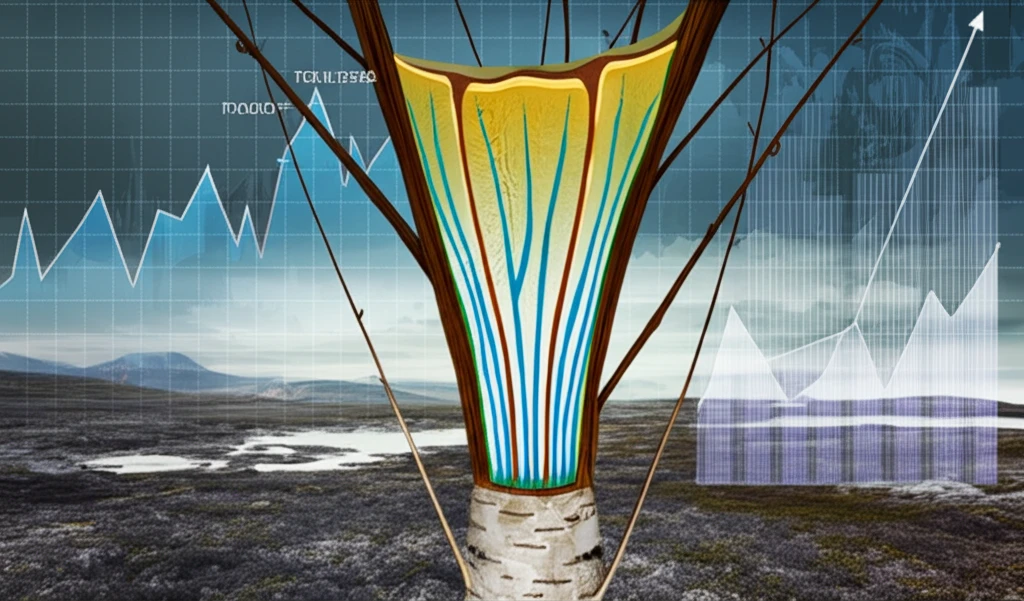
Decoding Greenland's Dwarf Birch: How Climate Change is Rewriting the Rules of Growth
"Uncover the surprising ways Greenland's dwarf birch adapts to climate shifts, revealing key insights into arctic ecosystem resilience."
The Arctic is warming, and its plant life is responding in surprising ways. While increased shrub growth has been observed across high northern latitudes, the reasons behind these changes are complex and not fully understood. Recent research focuses on Greenland’s dwarf birch (Betula nana), a keystone species in arctic ecosystems, to uncover the secrets of its adaptation to a changing climate.
Dwarf birch is uniquely positioned to provide insights into climate-growth relationships. This resilient shrub exhibits remarkable adaptability, adjusting its growth strategies in response to fluctuating environmental conditions. Scientists are particularly interested in how its xylem—the plant's water transport system—responds to these changes.
By studying the anatomical traits of xylem, researchers can unlock the mechanisms that allow dwarf birch to thrive (or struggle) in a rapidly changing world. This article delves into a groundbreaking study that explores the intricate relationship between climate, xylem anatomy, and growth patterns in dwarf birch, offering valuable clues about the future of arctic vegetation.
Xylem's Secret Language: How Dwarf Birch Adapts

At the heart of this research is the xylem, a complex network of vessels responsible for transporting water and nutrients throughout the plant. The size and arrangement of these vessels directly impact a plant’s ability to efficiently manage water, a critical factor in the harsh Arctic environment. By examining xylem anatomical traits, scientists can gain insights into how dwarf birch responds to climatic variations.
- Water Management: The study highlighted the importance of summer precipitation and winter temperature in promoting growth. Increased precipitation during the growing season provides crucial moisture, while warmer winters potentially extend the growing season.
- Xylem Optimization: The size and arrangement of xylem vessels play a key role in growth. Larger vessel lumen areas and strategic vessel grouping enhance water conductivity and hydraulic connectivity, allowing the plant to optimize its water transport system.
- Temperature Sensitivity: Vessel lumen area appears to be influenced by spring and summer temperatures, while vessel grouping is primarily driven by winter temperature. This suggests that dwarf birch fine-tunes its xylem anatomy in response to both short-term and long-term climatic cues.
Looking Ahead: The Future of Arctic Ecosystems
This study provides valuable insights into the adaptability of dwarf birch and its potential to cope with climate change. By understanding the mechanisms that govern its growth and survival, we can better predict the future of arctic ecosystems. Further research, with denser sampling and a focus on multiple spatial scales, is needed to fully unravel the complex relationships between climate, anatomical traits, and shrub growth. This knowledge is particularly crucial for forecasting vegetation changes in the vulnerable arctic ecosystem and ensuring its long-term health.
